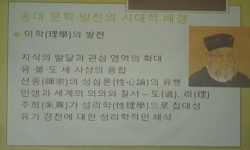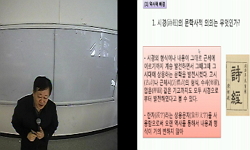냉전 종식 후 하나의 중국정책의 영향 속에 취해진 대만과의 단교/중공과의 수교조치는 중국에 대한 접근과 인식태도를 근본적으로 전환시킨 중대사건이었다. 이러한 대전환 이면에는 중국...
http://chineseinput.net/에서 pinyin(병음)방식으로 중국어를 변환할 수 있습니다.
변환된 중국어를 복사하여 사용하시면 됩니다.
- 中文 을 입력하시려면 zhongwen을 입력하시고 space를누르시면됩니다.
- 北京 을 입력하시려면 beijing을 입력하시고 space를 누르시면 됩니다.

냉전과 두 개의 중국, 1950~60년대 중국 인식과 중국문학의 수용 = Cold War, Two Chinas, and acceptance ofChina and Chinese literature in 1950s and 60s Korea
한글로보기https://www.riss.kr/link?id=A106076048
-
저자
이봉범 (성균관대학교)
- 발행기관
- 학술지명
- 권호사항
-
발행연도
2019
-
작성언어
Korean
-
주제어
냉전 ; 대만 ; 중공 ; 냉전외교정책 ; 아시아민족반공연맹 ; 아시아태평양이사회 ; 예술사절단 ; 세계문학전집 ; 무협지 ; 마오쩌둥 ; 장제스 ; 임어당 ; 루쉰 ; 검열 ; 대학제도 ; 중국문학사 ; Cold War ; Taiwan ; Red China ; Foreign Policy in the Cold War ; APACL(Asian Peoples Anti Communist League) ; ASPAC(Asian and Pacific Council) ; art delegation ; complete series of world literature ; martial arts novel ; Mao Zedong ; Chiang Kai-shek ; Lin Yutang ; Lu Xun ; censorship ; university system ; history of China literature
-
등재정보
KCI등재
-
자료형태
학술저널
-
수록면
73-128(56쪽)
-
KCI 피인용횟수
3
- DOI식별코드
- 제공처
-
0
상세조회 -
0
다운로드
부가정보
냉전 종식 후 하나의 중국정책의 영향 속에 취해진 대만과의 단교/중공과의 수교조치는 중국에 대한 접근과 인식태도를 근본적으로 전환시킨 중대사건이었다. 이러한 대전환 이면에는 중국문학에 대한 인식과 수용의 굴곡진 역사가 개재되어 있다. 차오위의「雷雨」수용사가 이를 잘 대변해준다. 냉전기 중국에 대한 접근과 중국문학의 수용은 대만(선택)/중공(배제)의 틀로 단순화되지 않는 복잡성을 지닌다. 마오쩌둥에 대한 지식인사회의 지속적 관심에서 보듯 배제되었다고 여겨진 것이 또 다른 맥락에서 실체적 흐름을 형성하며 중국에 대한 이해의 지평을 개척하고 있었다. 1950~60년대 두 개의 중국에 대한 접근은 냉전의 거시적 규율과 한국의 냉전외교정책에 의해 촉진/제약된다. 1954년 아시아민족반공연맹(APACL)과 1966년 아시아태평양이사회(ASPAC)의 창설로 구체화된 한국주도의 아시아지역구상은 미국의 동아시아전략과의 부정합성으로 군사동맹체의 성격이 탈각되는 대신 아시아국가와의 문화적 교류, 협력관계를 촉진시키는 역설적 계기가 된다. 1950년대 대만과의 문화교류도 주로 APACL을 매개로 선전전 차원에서 시행된 동남아예술사절단 파견의 일환으로 이루어지는데, 반공과 독재를 근간으로 한 사상적 연대라는 범주를 넘어서지 못했다. 저널리즘을 통해 증식된 중공에 대한 담론도 정보가 차단된 상태에서 심리전에 경사된 미국 정보에 의존한 결과 냉전적 적대를 양산하는데 그친다. 그러나 1960년대 들어 중국에 대한 접근은 새로운 국면을 맞게 된다. 데탕트국면의 도래와 박정희정권의 아시아중시 외교정책에 따라 지피지기승공론의 차원에서 중공을 중심 대상으로 한 아시아의 공산주의와 근대화에 대한 연구가 촉진된 것이다. 특히 포드재단, 아시아재단 등 미국 민간재단의 원조에 의해 국제적 냉전네트워크와의 긴밀한 연계 속에 전문적인 중공 연구가 트랜스내셔널한 차원으로 확장되기에 이른다. 대만에 대한 관심은 초점이 경제로 이동하며 대만의 근대화 문제로 집중된다. 이 같은 두 개의 중국에 대한 이해의 지평은 중국문학의 번역과 수용에도 대체로 적용된다. 1950년대 후반 세계문학전집에서 중국문학의 비중은 현저히 낮았고, 중국의 전근대문학이거나 대만작가의 작품이 포함되었을 뿐이다. 당대 상상된 세계문학에서 중국문학은 배제된 것이나 마찬가지였다. 그러나 번역 전체의 지형으로 볼 때 중국문학은 영미문학 다음으로 많았는데, 대부분 중국문학이란 특징 하에 전근대문학, 대만의 무협소설, 일부의 대만 전후문학, 그것도 상당수가 중공과 대만에서 배척된 문학이 번역되는 기형성을 나타낸다. 1950~60년대 외국문학의 번역 및 수용은 냉전검열에 의해 규율되는 일반성을 지니는데, 중국문학의 번역이 가장 불구성을 나타낸 것은 검열의 영향뿐만 아니라 대학제도, 전문학회의 존재와 학술지 발간의 지속성, 대학원을 중심으로 한 학술연구의 재생산기반, 미디어의 관심도 등 제도적 차원의 물적 토대가 허약했던 것이 복합적으로 작용한 산물이다. 1960년대 임어당 붐과 루쉰 문학이 냉전반공을 뒷받침하는 사상적, 문화적 자원으로 수용되는 양상도 냉전기 중국문학 수용의 축소, 왜곡을 잘 보여주는 사례이다. 특이하게 냉전기 중국문학의 번역, 수용의 불구성 속에서도 일련의 중국문학사 저술이 하나의 흐름으로 존재한다. 중국신문학에 대한 체계적 서술의 ...
다국어 초록 (Multilingual Abstract)

After the end of the Cold War, Korean government broke diplomatic relations with Taiwan and established diplomatic relations with Communist China. These actions transformed Koreans’ attitude toward China fundamentally. Behind these turn, there is a ...
After the end of the Cold War, Korean government broke diplomatic relations with Taiwan and established diplomatic relations with Communist China. These actions transformed Koreans’ attitude toward China fundamentally. Behind these turn, there is a difficult history of acceptance of Chinese literature in Cold War Korea. It is a good example that the acceptance of Cao Yu’s “Thunderstorm” in Cold War Korea. Korean approaches to china and acceptance of Chinese literature in Cold War period can’t be just characterized by a binary structure: selecting Taiwan and excluding Communist China. As Korean intellectuals’ continued interest in Mao Zedong shows, what is officially considered excluded had promoted another way to understand China. In 1950s and 60s Korea, relationship with two Chinas was promoted or, conversely, limited by Korean governments’ Cold War controls and diplomatic policies. It was foundations of Asian People’s Anti-Communist League (APACL) in 1954 and Asian and Pacific Council (ASPAC) in 1966 that materialized Korean governments’ Korean-led Asian regional initiative. Though these organizations couldn't be military alliance such as NATO because it would conflict American East Asian policies, it promoted paradoxically Korean cultural exchanges and cooperations with other Asian countries. In 1950s, Cultural exchanges between Korea and Taiwan were mostly taken in form of goodwill missions’ Southeast Asia tour held by APACL, these tours are nothing but a ideological solidarity based on Anti-communism and dictatorship. Korean journalism’s discussions on Communist China also followed Cold War antagonism because their sources was very limited and depended on American materials. However, It began a new phase of Korean approach to China in the 1960s. As détente mood has arrived and Park’s Administration began to implement a more Asia-conscious foreign policies, it improved that studies of Communism and Modernization in Asia, especially Communist China. While American private foundations including Ford and Asia Foundations assist the development of international cold war networks, it became to broaden transnationally that area of study on Communist China. Koreans’ main interest about Taiwan was shifted from cultural issues to economic issues, focusing issues of Modernization in Taiwan. These changes on way to understand Two Chinas also work translating and accepting of Chinese literature. There are very little Chinese works in world literature anthologies in the late 1950s, and it were just traditional Chinese literature or Taiwanese writers’ works in them. Koreans didn't think that Chinese literature have significant for world literature a whole. However, Chinese literature was is second only to Anglo-American works in the number of translations, most of them included traditional Chinese literature, Taiwanese wuxia fictions, and some of Taiwanese post-war literature. many of those translations are the excluded works in both Communist China and Taiwan. In 1950s and 60s, Korean translations and acceptance of foreign literature were generally controlled by Cold War censorship, as well as its lack of academical and journalistic infrastructures: related department in high education system, scholarly societies, and academic journals. In 1960s, Lin Yutang’s and Lu Xun’s works were accepted as ideological and cultural materials which support Cold War Anti-communism. Besides Chinese literature were inevitably translated and got acceptation in Cold War context, a series of histories of Chinese literature were steadily published. These works have merits as systemic approach, but generally give Taiwanese literature legitimacy as a successor to Chinese modern literature. It also shows that the boundaries of Korean understanding Two Chinas was limited by Cold War.
참고문헌 (Reference)
1 권보드래, "林語堂, ‘동양’과 ‘지혜’의 정치성 - 1960년대의 林語堂 열풍과 자유주의 노선" 한국학연구원 (51) : 99-135, 2013
2 윤영춘, "현대중국문학사" 계림사 1949
3 김병철, "한국현대번역문학사연구(상)" 을유문화사 1998
4 최진호, "한국의 루쉰 수용과 현대중국의 상상" 성균관대 2016
5 문명기, "한국의 대만사 연구, 1945~2012" 중국근현대사학회 (57) : 237-271, 2013
6 王康寜, "한국에서의 장아이링 문학에 대한 수용․번역 양상 연구" 고려대 2014
7 한국연구도서관, "한국석박사학위논문목록(1945~1960년)"
8 이용희, "한국 현대 독서문화의 형성" 성균관대 2018
9 김동식, "한국 무협소설 연구의 새로운 지평(서평)" (겨울) : 2003
10 정문상, "포드재단(Ford Foundation)과 동아시아 ‘냉전지식’ -한국과 중화민국의 중국근현대사연구 사례를 중심으로-" 아시아문화연구소 36 : 179-201, 2014
1 권보드래, "林語堂, ‘동양’과 ‘지혜’의 정치성 - 1960년대의 林語堂 열풍과 자유주의 노선" 한국학연구원 (51) : 99-135, 2013
2 윤영춘, "현대중국문학사" 계림사 1949
3 김병철, "한국현대번역문학사연구(상)" 을유문화사 1998
4 최진호, "한국의 루쉰 수용과 현대중국의 상상" 성균관대 2016
5 문명기, "한국의 대만사 연구, 1945~2012" 중국근현대사학회 (57) : 237-271, 2013
6 王康寜, "한국에서의 장아이링 문학에 대한 수용․번역 양상 연구" 고려대 2014
7 한국연구도서관, "한국석박사학위논문목록(1945~1960년)"
8 이용희, "한국 현대 독서문화의 형성" 성균관대 2018
9 김동식, "한국 무협소설 연구의 새로운 지평(서평)" (겨울) : 2003
10 정문상, "포드재단(Ford Foundation)과 동아시아 ‘냉전지식’ -한국과 중화민국의 중국근현대사연구 사례를 중심으로-" 아시아문화연구소 36 : 179-201, 2014
11 루쉰, "중국소설사" 금문사 1964
12 김동성, "중국문화사" 을유문화사 1961
13 후윤이, "중국문학사" 한국번역도서주식회사 1961
14 차상원, "중국문학사" 동국문화사 1958
15 윤영춘, "중국문학사" 백영사 1954
16 박진영, "중국 근대문학 번역의 계보와 역사적 성격" 민족문학사학회 (55) : 121-152, 2014
17 김준엽, "중공권의 장래" 범문사 1967
18 왕은미, "아시아민족반공연맹의 주도권을 둘러싼 한국과 중화민국의 갈등과 대립 (1953-1956)" 아세아문제연구소 56 (56): 155-194, 2013
19 장세진, "슬픈 아시아; 한국지식인들의 아시아기행(1945~1966)" 푸른역사 2012
20 "서울대 한국교육사고, 한국정당사 사찰요람"
21 전형준, "무협소설의 문화적 의미" 서울대출판부 2003
22 김현, "무협소설은 왜 읽히는가-허무주의의 부정적 표출"
23 정종현, "루쉰(魯迅)의 초상 -1960~1970년대 냉전문화의 중국 심상지리-" 국제한국문학문화학회 (14) : 51-103, 2013
24 윤여일, "동아시아담론: 1990~2000년대 한국사상계의 한 단면" 돌베개 2016
25 이마가와 에이치, "동남아시아 현대사와 세계열강의 자본주의 팽창(하편)" 이채 2011
26 백영서, "대만을 보는 눈" 창비 2012
27 현대중국문학학회, "노신의 문학과 사상" 백산서당 1996
28 정문상, "냉전기 한국인의 대만인식 ― 일간지의 대만 관계 기사 분석을 중심으로 ―" 중국근현대사학회 (58) : 87-103, 2013
29 조양현, "냉전기 한국의 지역주의 외교: 아스팍(ASPAC) 설립의 역사적 분석" 한국정치학회 42 (42): 247-276, 2008
30 최진호, "냉전기 중국 이해와 루쉰 수용 연구" 한국학연구소 (39) : 277-312, 2015
31 최진석, "근대/중국/여성의 자기서사와 1940~1960년대 한국의 중국 이해- 셰빙잉(謝冰瑩) 자서전의 수용사를 중심으로 -" 한국근대문학회 18 (18): 73-104, 2017
32 김남석, "《뇌우》 공연의 변모 과정에 대한 연구" 한국연극학회 (22) : 109-146, 2004
33 정문상, "‘中共’과 ‘中國’ 사이에서 - 1950~1970년대 대중매체상의 중국 관계 논설을 통해 보는 한국인의 중국 인식 -" 동북아역사재단 (33) : 57-90, 2011
34 윌리 톰슨, "20세기 이데올로기" 산처럼 2017
35 이봉범, "1980년대 검열과 제도적 민주화" 구보학회 (20) : 153-210, 2018
36 이봉범, "1950년대 번역 장의 형성과 문학 번역 ― 국가권력, 자본, 문학의 구조적 상관성을 중심으로" 대동문화연구원 (79) : 431-510, 2012
동일학술지(권/호) 다른 논문
-
공상과 과학의 시대 - 1960년대 후반 어린이 관객의 형성과 애니메이션과 괴수영화 출현의 의미 -
- 인하대학교 한국학연구소
- 공영민
- 2019
- KCI등재
-
중국어 번역본 『朝鮮現代兒童故事集』(1936)의 가치와 작품에 나타난 식민지 어린이 형상
- 인하대학교 한국학연구소
- 권애영
- 2019
- KCI등재
-
1950년대 아시아재단의 민족문화유산 지원 연구 - 국립중앙박물관 지원을 중심으로 -
- 인하대학교 한국학연구소
- 정종현
- 2019
- KCI등재
-
- 인하대학교 한국학연구소
- 이홍식
- 2019
- KCI등재
분석정보
인용정보 인용지수 설명보기
학술지 이력
| 연월일 | 이력구분 | 이력상세 | 등재구분 |
|---|---|---|---|
| 2027 | 평가예정 | 재인증평가 신청대상 (재인증) | |
| 2021-01-01 | 평가 | 등재학술지 유지 (재인증) |  |
| 2018-01-01 | 평가 | 등재학술지 유지 (등재유지) |  |
| 2015-01-01 | 평가 | 등재학술지 유지 (등재유지) |  |
| 2011-01-01 | 평가 | 등재학술지 선정 (등재후보2차) |  |
| 2010-01-01 | 평가 | 등재후보 1차 PASS (등재후보1차) |  |
| 2008-01-01 | 평가 | 등재후보학술지 선정 (신규평가) |  |
| 2006-07-12 | 학회명변경 | 영문명 : Institute of Korean Studies -> Center for Korean Studies |
학술지 인용정보
| 기준연도 | WOS-KCI 통합IF(2년) | KCIF(2년) | KCIF(3년) |
|---|---|---|---|
| 2016 | 0.75 | 0.75 | 0.68 |
| KCIF(4년) | KCIF(5년) | 중심성지수(3년) | 즉시성지수 |
| 0.62 | 0.59 | 1.314 | 0.39 |




 KCI
KCI KISS
KISS






